Bigelow 3 on 3 with passers
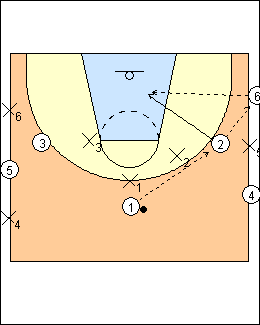 | 1 Bob Bigelow 3 on 3 halfcourt with sideline passers, extra players on each team are on the sidelines and are outlet passers, a teammate on the floor can pass to them at any time, and they can only pass back to a teammate on the floor. Sideline passers can't pass to each other, or intercept passes by the other team. Kids should play 1 on 1, 2 on 2, and 3 on 3 halfcourt, there are more touches and it reduces the pace of the game. Basketball is a triangle sport, and 5 on 5 is a scramble for kids. Use 1/3 of practice for individual skills, 1/3 for small-sided games, and 1/3 for 5 on 5 fullcourt with limited dribbles past halfcourt (3-4 dribbles for Grade 3, 1-2 dribbles for Grade 8). Keep kids moving, they are "doing" learners. Every kid should bring a ball, but coach should bring a bag in case they forget. Beware the 3 L's - lectures, laps and lines. Do a hard segment then a softer segment. During a game, coach the process, not the outcome or score. Don't stand up, you'll talk more, sit down, and instruct players when they aren't in the game. Use an assistant coach to sub, which should be every 3-5 minutes. Adults want to win (there's no problem worse than the coach who wants to win), kids want to play, every kid should have meaningful playing time, which is at least 12 minutes - less is a cameo appearance. He loves 8-kid basketball teams. Play man-to-man defence. Basketball is a late-developing sport, especially for taller kids. Kids should play multiple sports. |
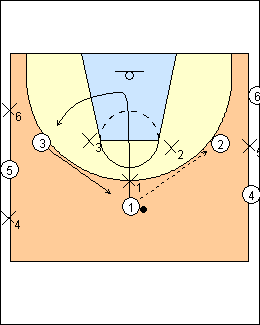 | 2 Although it's hard for kids to understand, movement without the ball is important, it keeps your defender occupied. The first thing is to cut to the basket with your hand out, looking at the ballhandler. Here 1 passes to 2 and basket cuts, 3 pops out to replace 1, so 1 takes 3's spot to keep the triangle. |
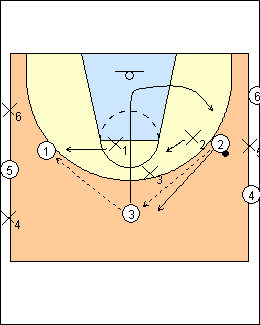 | 3 The pattern continues when the ball is reversed to 1, 3 basket cuts and is replaced by 2, 3 keeps the triangle. To rehearse this, start with 3 on 0, then add defenders who do not try to steal the ball. (Progressions) - 3 clears to the weakside corner, blast cuts on a pass back out top - 1 backcuts if overplayed, or 3 uses a dribble-at into a backcut, shallow cut (dribble loop), or dribble hand-off. |
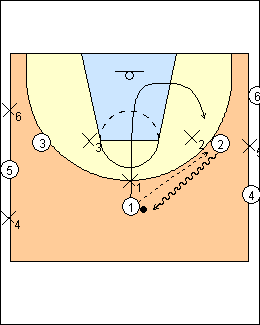 | 4 Here's another way to do it, when 1 passes and basket cuts, 2 just dribbles out to replace 1, so 1 replaces 2. To continue the pattern, 2 would pass to 3 and basket cut, 3 dribble out to replace 2, and 2 replace 3 on the wing. |
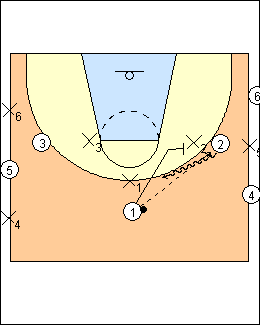 | 5 Another concept is to pass and set a ballscreen. 1 passes to 2 and follows his pass to set a pick for 2, who dribbles off the screen. To rehearse the pattern, 1 replaces 2 on the wing, 2 dribbles out top, passes to 3 and follows his pass to ballscreen. For 5 on 5, Bigelow suggests that the two players closest to the ball screen for the two players furthest from the ball, see Offence - Bigelow 5-out youth. |
This page was made with Basketball playbook from Jes-Soft